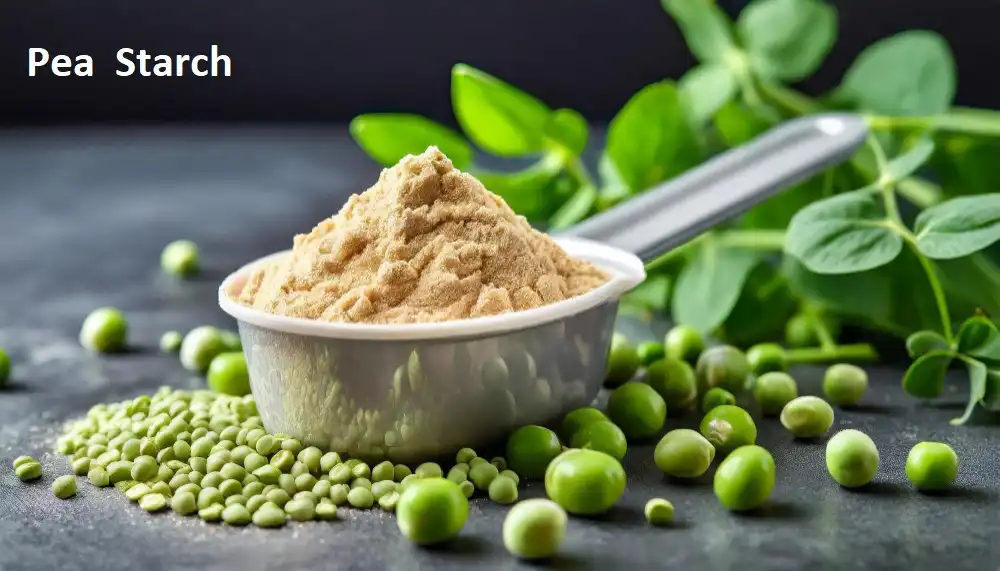
The Pea Starch Market is projected to reach $307.4 million by 2029, at a CAGR of 7.7% from 2022 to 2029.
Rising Prevalence of Celiac Disease and Gluten Intolerance
Gluten intolerance or celiac disease is a growing concern, affecting the small intestine due to an autoimmune response triggered by gluten consumption. The primary symptoms of this disorder include stomach pain, intestinal discomfort, diarrhea, anemia, and fatigue. According to The Institute for Functional Medicine (2020), the incidence of celiac disease has been increasing at an average rate of 7.5% annually over the past few decades. This increase is notably higher in females and children compared to men. For example, women experience a celiac disease incidence rate of 17.4 per 100,000 persons annually, compared to 7.8 per 100,000 persons in men. Among children, the rate stands at 21.3 per 100,000 persons per year, compared to 12.9 per 100,000 persons in adults.
Download PDF Brochure @ https://www.meticulousresearch.com/download-sample-report/cp_id=5389
Global Incidence and Regional Variations
The rise in celiac disease cases has been observed across several Western countries over the past few decades. As reported by The Institute for Functional Medicine, the global prevalence of celiac disease is approximately 1.4% based on serologic tests. There are notable regional variations, with prevalence rates of 0.4% in South America, 0.5% in Africa and North America, 0.6% in Asia, and 0.8% in Europe and Oceania. This growing incidence is largely driven by an increase in immune-based disorders, which occur independently of improved disease detection.
Treatment and Demand for Gluten-Free Products
The primary treatment for celiac disease is a strict gluten-free diet, which allows the small intestine to heal over time. This dietary requirement has fueled the demand for gluten-free products. Additionally, individuals suffering from other health conditions such as wheat allergies, inflammatory diseases, and non-celiac gluten sensitivity also seek out gluten-free options. Governments have recognized the need to raise awareness about celiac disease and gluten intolerance. Consequently, they have implemented various campaigns and mandated labeling on gluten-free products to promote these alternatives and increase public awareness. These initiatives, combined with the growing prevalence of food allergies, have created significant demand for gluten-free foods in the global market.
Pea Starch as a Key Ingredient in Gluten-Free Products
In response to the rising demand for gluten-free products, pea starch has emerged as a vital ingredient. Pea starch is not only gluten-free but also non-allergenic, making it an ideal alternative for individuals with gluten sensitivities. As the Pea Starch Market continues to expand, it is being used in a wide array of gluten-free food products. The versatility and non-allergic properties of pea starch have positioned it as a crucial ingredient in this burgeoning industry, catering to the dietary needs of those suffering from celiac disease and other gluten-related disorders.
Conclusion
With the increasing prevalence of celiac disease and other food allergies, the demand for gluten-free products is set to rise even further. This growing market, driven by health concerns and the need for safer dietary alternatives, has highlighted the importance of ingredients like pea starch. As a gluten-free and non-allergenic option, pea starch is becoming an essential component in the development of gluten-free foods, ensuring that those affected by gluten intolerance can enjoy a wider range of safe and nutritious products. The Pea Starch Market is poised for growth as awareness and demand for gluten-free alternatives continue to expand across the globe.
Key Players:
The pea starch market is characterized by a moderately competitive scenario due to the presence of many large- and small-sized global, regional, and local players. The key players operating in the pea starch market are Axiom Foods Inc. (U.S.), Dakota Dry Bean Inc. (U.S.), American Key Products, Inc. (U.S.), Roquette Frères (France), Vestkorn Milling AS (Norway), Yantai Shuangta Food co., LTD (China), Cosucra Groupe Warcoing SA (Belgium), Ingredion Incorporated (U.S.), NutriPea LP (Canada), Shandong Jianyuan Foods Co., Ltd. (China), Puris Proteins, LLC (U.S.), Emsland Group (Germany), Meelunie B.V. (Netherlands), Agridient B.V. (Netherlands), Aminola B.V. (Netherlands), and Ebro Foods, S.A. (Spain).
Purchase Now : https://www.meticulousresearch.com/Checkout/38846553
Scope of the Report:
Pea Starch Market, by Nature
- Conventional Pea starch
- Organic Pea starch
Pea Starch Market, by Type
- Native Pea starch
- Modified Pea starch
Pea Starch Market, by Function
- Thickener & Gelling Agent
- Binder
- Stabilizer
- Disintegrant
- Other Functions
Pea Starch Market, by Application
- Food & Beverage
- Bakery & Confectionery Products
- Dairy Products
- Soups & Sauces and Savory & Prepared Food Products
- Meat & Seafood Products
- Other Food & Beverage Products
- Paper Industry
- Pharmaceuticals and Chemicals
- Animal Feed and Pet Food
- Other Applications
Pea Starch Market, by Geography
- North America
- U.S.
- Canada
- Europe
- Germany
- France
- U.K.
- Italy
- Spain
- Rest of Europe
- Asia-Pacific
- China
- Japan
- India
- Australia
- Rest of Asia-Pacific
- Latin America
- Brazil
- Mexico
- Argentina
- Rest of Latin America
- Middle East & Africa
About Meticulous Research®
Meticulous Research® is a leading provider of comprehensive market intelligence, offering actionable insights and analysis across various industries. Our reports empower businesses to make informed decisions, drive growth, and remain competitive in a rapidly evolving marketplace.
Contact:
Meticulous Market Research Pvt. Ltd.
1267 Willis St, Ste 200 Redding,
California, 96001, U.S.
USA: +1-646-781-8004
Europe : +44-203-868-8738
APAC: +91 744-7780008
Email- sales@meticulousresearch.com
Visit Our Website: https://www.meticulousresearch.com/
Connect with us on LinkedIn- https://www.linkedin.com/company/meticulous-research







